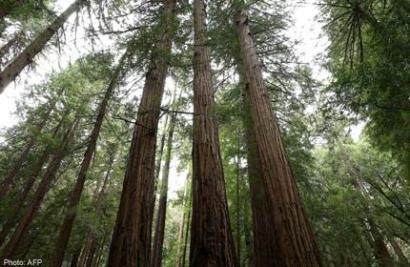Help at hand to relocate threatened species

SYDNEY - Australian and New Zealand scientists Thursday said they have devised the “first rigorous framework” on deciding whether to relocate endangered animals threatened with extinction by climate change.
The researchers said it was designed to quantify whether the benefit of moving a vulnerable species outweighed the ecological cost.
With rapidly changing climatic conditions around the world, the framework aims to help wildlife managers make the difficult decision on whether to move animals into new areas or leave them in places that may become uninhabitable.
The researchers have “test-driven” the new framework using the hypothetical case of the New Zealand tuatara, the country’s largest reptile, which could be moved from its home on small offshore islands in the north of the country to the South Island, where it is currently extinct.
“With the climate changing more rapidly than species can move or adapt, our only chance of saving some species may be to move them to more climatically suitable areas,” said lead author and environmental scientist Tracy Rout from the University of Melbourne.
“But introducing species to areas outside their historical range is a controversial strategy, and we have to be sure it will work, both for the animals themselves, and for other species in their new habitat.”
The work follows a request by the International Union for Conservation of Nature for a new process to assess species relocation.
The resulting study, published Thursday in the journal PLOS ONE, takes some of the guesswork out of the decision-making.
With “the world’s first rigorous quantitative framework” those decisions can now be made by combining scientific prediction with clear management goals.
“Our framework separates these out, makes them explicit, and then combines them in a logical way,” Rout said.
Hugh Possingham, director of the Australian Research Council’s Centre of Excellence for Environmental Decisions, said the new approach “uses tried and tested tools from economics and applied mathematics to make smarter conservation decisions”.
“This new framework takes into account the benefit of moving a species based on the likelihood it will go extinct in its original habitat as the local climate becomes hostile; the likelihood that a breeding population can be established at a new site; and the value or importance of the species,” he said.
“The ecological cost depends on the potential for the species to adversely affect the ecosystem at the new site.
“Species are considered candidates for relocation only if the benefit of doing so is greater than the ecological cost.”
Tuatara are endemic to New Zealand. They are often referred to as “living fossils” and are the only survivors of an order of reptiles that roamed the earth at the same time as the dinosaurs.
Other animals being considered for relocation are Australia’s critically-endangered Western Swamp Tortoise, tiny Mountain pygmy possum and Golden Bowerbird whose habitat has become either too dry or too warm.